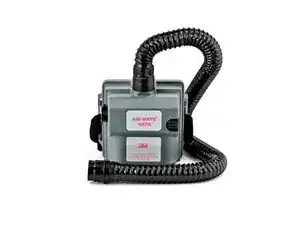Background and Identification
A respirator is a device designed to protect the wearer from inhaling fumes, vapors, gases, particulate matter, and other hazardous atmospheres. Respirators fall into two different categories, air-purifying respirators, and air-supplied respirators. Air-purifying respirators supply breathable air by filtering a contaminated atmosphere. Air-supplied respirators provide an alternate supply of breathable air. Within each respirator category, different techniques are used to reduce or eliminate hazardous airborne contaminants.
Air-purifying respirators range from inexpensive single-use, disposable face masks (sometimes called dust masks) to more robust reusable masks with replaceable cartridges (sometimes called gas masks). Most respirators depend upon forming a good seal between the respirator body and the face of the wearer. A poor fit can have a negative impact on the respirator’s overall effectiveness by up to 65%.
Ventilators and respirators are often confused by the general public. A ventilator is a machine that provides mechanical ventilation by moving breathable air into and out of a person’s lungs to deliver breaths to a patient who is breathing insufficiently or physically unable to breathe. Modern ventilators are computerized microprocessor-controlled machines that are primarily used in intensive care medicine, home care, emergency medicine, and anesthesiology. Ventilators are sometimes called “respirators,” though medical terminology uses the word “respirator” to refer to a protective face-mask.


